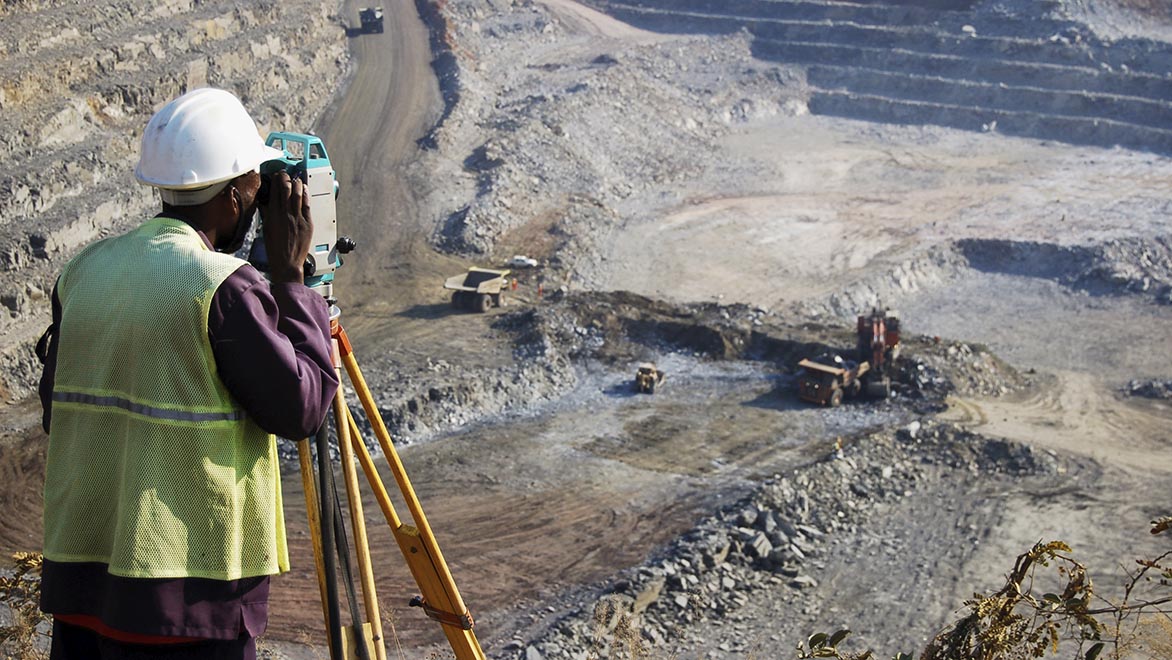Indicators on Geotheta You Need To Know
7 Easy Facts About Geotheta Explained
Table of Contents4 Simple Techniques For GeothetaExcitement About GeothetaSome Ideas on Geotheta You Need To KnowGeotheta Things To Know Before You Get ThisThe Ultimate Guide To Geotheta

They conduct site examinations, collect examples, do lab tests, and examine information to review the viability of the ground for building projects - Consulting Engineer. Based on their findings, geotechnical designers supply recommendations for structure layout, incline security, maintaining structures, and reduction of geotechnical hazards. They work together with various other specialists, such as engineers, architectural designers, and construction groups, to make sure that geotechnical factors to consider are integrated right into the general job layout and implementation
By assessing the habits and properties of dirt and rock, they can determine potential geotechnical dangers such as landslides, soil settlement, or incline instability. Their knowledge aids protect against failings or accidents that could threaten lives and residential or commercial property. Below are some in-depth obligations and duties of a geotechnical engineer: Site Examination: Geotechnical designers conduct website examinations to collect data on subsurface conditions.
They analyze the information to understand the properties and habits of the dirt and rock, including their toughness, leaks in the structure, compaction qualities, and groundwater problems. Geotechnical Analysis and Style: Geotechnical engineers assess the information accumulated during site examinations to evaluate the security and suitability of the site for building and construction jobs. They carry out geotechnical computations and modeling to review elements such as birthing capacity, negotiation, incline stability, lateral earth pressures, and groundwater flow.
Things about Geotheta
Structure Layout: Geotechnical designers play an important role in developing foundations that can safely support the desired structure. They examine the dirt conditions and tons needs to determine the ideal foundation type, such as superficial structures (e.g., footings), deep structures (e.g (https://hub.docker.com/u/geotheta)., piles), or specialized techniques like dirt renovation. They take into consideration variables such as settlement limits, bearing capability, and soil-structure communication to create optimal foundation designs
They evaluate building strategies, monitor site tasks, and perform field evaluations to validate that the style suggestions are complied with. If unexpected geotechnical problems emerge, they examine the scenario and provide suggestions for remediation or changes to the design. Threat Evaluation and Reduction: Geotechnical engineers analyze geotechnical hazards and dangers connected with the task site, such as landslides, liquefaction, or soil erosion.

Cooperation and Interaction: Geotechnical designers work very closely with other professionals included in a task, such as engineers, architectural designers, and building and construction teams. Efficient interaction and cooperation are necessary to incorporate geotechnical factors to consider right into the total job layout and building and construction process. Geotechnical designers offer technical expertise, response inquiries, and guarantee that geotechnical requirements are fulfilled.
The Definitive Guide to Geotheta
Below are some kinds of geotechnical engineers: Foundation Designer: Structure designers concentrate on developing and assessing foundations for frameworks. They evaluate the dirt conditions, lots demands, and website characteristics to figure out the most proper foundation type and layout, such as superficial structures, deep structures, or specialized techniques like pile structures.
They examine the factors affecting incline stability, such as dirt residential properties, groundwater problems, and slope geometry, and develop approaches to avoid incline failings and reduce dangers. Earthquake Engineer: Earthquake engineers specialize in evaluating and designing frameworks to endure seismic forces. They assess the seismic threat of a website, examine soil liquefaction capacity, and create seismic style requirements to make sure the safety and security and resilience of structures during earthquakes.
They perform area testing, accumulate samples, and evaluate the accumulated data to identify the soil residential or commercial properties, geologic formations, and groundwater conditions at a website. Geotechnical Instrumentation Engineer: Geotechnical instrumentation engineers concentrate on surveillance and gauging the actions of dirt, rock, and structures. They install and preserve instrumentation systems that monitor variables such as dirt negotiation, groundwater levels, slope motions, and structural displacements to analyze efficiency and give very early warnings of possible problems.
The Ultimate Guide To Geotheta
They perform examinations such as triaxial tests, debt consolidation examinations, straight shear examinations, and permeability tests to gather information for geotechnical evaluation and layout. Geosynthetics Designer: Geosynthetics designers concentrate on the design and application of geosynthetic products, such as geotextiles, geogrids, and geomembranes. They utilize these products to improve dirt security, strengthen inclines, provide drain options, and control disintegration.
They often tend to be investigative people, which means they're intellectual, introspective, and analytical. They are curious, methodical, reasonable, analytical, and rational. Some of them are likewise social, implying they're kind, generous, cooperative, person, caring, practical, empathetic, tactful, and friendly - Engineer of Record.
In the office this contact form setting, geotechnical engineers utilize specialized software application devices to execute calculations, produce layouts, and evaluate information. They prepare reports, testimonial task specs, communicate with customers and staff member, and coordinate task tasks. The office setup gives a helpful setting for research, evaluation, and collaboration with other specialists included in the project.
9 Simple Techniques For Geotheta
They frequently check out task sites to conduct site examinations, examine geotechnical conditions, and gather information for evaluation. These visits include taking a trip to different places, occasionally in remote or difficult surfaces. Geotechnical engineers might execute dirt tasting, conduct examinations, and display construction tasks to make sure that the geotechnical facets of the project are being executed correctly.
Geotechnical designers additionally function in specialized geotechnical labs. Geotechnical lab designers function thoroughly in these environments, managing testing tools, running tools, and videotaping information.